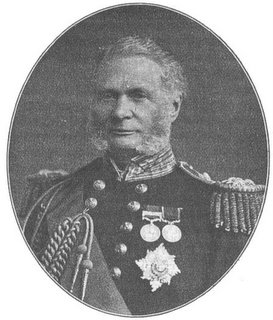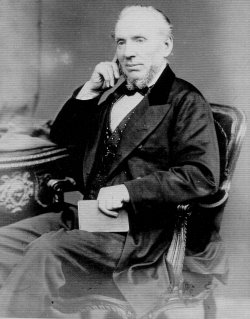Nicholas Lucraft: witness at Old Bailey 1833
This week I came across a Nicholas Lucraft whom I believe to be this man. He was the innkeeper of the Macclesfield Arms in City Road, London and he gave evidence at the trial at the Old Bailey of two men who were accused of assault and theft. There were several other witnesses cross examined, and if you want to read the whole trial transcript from 1833, you can find the Old Bailey records online at and available to read for nothing at :
http://www.oldbaileyonline.org/html_sessions/T18330214.html
I have extracted the victim’s initial statement from the witness box, and then Nicholas’s own testimony. Both men were convicted and sentenced to death.
I’ve also found him and his family living at 20 Grange Walk in Bermondsey in 1851. He says he was born in Broadclyst, and is aged 57. This would put his birth at about 1794. His is listed as a warehouseman, and his son as a cellarman, which would put them both in the wine and drinks industry, which is what later records say. It would also suggest why he made enough profit to call himself a “gent” in later life!
There is a record of a death in Shoreditch in 1855, which might be him, but not checked yet.
I think we have cracked the case.
The Macclesfield Arms
The Macclesfield Arms was recorded at 268 City Road in the 1881 Census, but the landlord by then was John Sayer. There are other references to the Macclesfield Arms in the Old Bailey records; no doubt there were several incidents around the canal wharf area of City road.
The Macclesfield Arms was still on City Road in the 1940s and is listed in a major listing of all the public houses in London at that time. For a short time in 1873 the inn hosted the Cornwallis Masonic Lodge, one of the older lodges, as it sought a new home, before settling later in Bromley, Kent.
The red circle on the map above shows the position of 259 City Road, about opposite Macclesfield Road and at the end of Wharf Road, which features in the case below. I suspect the road name is all that’s left of the public house now.
The explosion at Macclesfield Bridge of 1874 was a famous incident in the canal's history, in which a gunpowder barge blew up, destroying the bridge and sending debris in all directions.
The Proceedings of the Old Bailey 14th February, 1833
THE RIGHT HONOURABLE SIR PETER LAURIE , KNT., MAYOR.
THIRD SESSION, HELD AT JUSTICE HALL, IN THE OLD BAILEY, ON THURSDAY, THE 14th DAY OF FEBRUARY, 1833, AND FOLLOWING DAYS.
Second Middlesex Jury, before Mr. Justice Patteson.
441. JOHN TURFREY and SAMUEL HARDING were indicted for feloniously assaulting Thomas Bodle , on the 3rd of February, at St. Luke, putting him in fear, and taking from his person, and against his will, 6 shillings, 5 sixpences, and 3 halfpence, his property .
THOMAS BODLE. I am a boatman, and live at Ratcliff, near Nottingham - I am in the employ of Mr. Munday; I came from Shipley to London for coals - we came to London on the Friday before I was at the Police-office; I was at the Windsor Castle, City-road, on the Saturday, about six o'clock, or about half-past six in the afternoon; I drank there until half-past eleven o'clock; I remained there the whole time - Turfrey was drinking on the other side of the table I sat at; he did not drink with me - he was trying to sell something; I did not drink such a vast deal there; I was not at all drunk when I left there, nor was I the worse for liquor; I left the house, at half-past eleven o'clock - I wanted some more liquor, and they would not give it to me- I paid for what I had; I then had between 8s. and 9s. in my pocket in silver, and 1 1/2d. in copper - when I came out Turfrey followed me close - I went to the Macclesfield Arms, over the canal bridge, City-road; Turfrey came into the house after me - I had some drink there; I believe I had a glass of gin and a glass of red port wine; I wanted more there - they would not give it me; I left there, then went across the way to the City Arms, and did not see Turfrey go in there; I sat down and went to sleep there - I do not remember drinking any thing there; I felt myself rather fresh when I was there - I do not know how long I slept there; the next I recollect was when I was walking on the bridge by myself (I do not recollect coming out of the house) - then Harding and Turfrey came up together; I had never seen Harding before, to my recollection - they came up and said, "Lay hold of the b - r's hands, and let us take him on board;" Harding said so - my boat laid at the wharf No. 33 in the City-road, three or four hundred yards from the bridge; they were then taking me along the road - one laid hold of one arm, and one the other; they took me along the road till I showed them which wharf my boat laid down - they took me about halfway down the wharf; I said I could go by myself then, and thanked them - they let go of me, and I was going to the boat by myself; they ran after me again, and said, "Let us knock the b-r down and take his money from him;" Harding said that, and he ran up to me, hit me on the breast, and knocked me down - Harding put his hands into my breeches pockets, and then said, "Lay hold of the b-r's legs, let us kill the b-r, and heave him in this hole; Turfrey was looking on - he was close to me when Harding struck me; Turfrey then laid hold of my legs, and Harding laid hold of my arms; they hove me right into a hole - it was like an unfinished building, like a cellar hole; I do not know how deep it was - I recollect nothing more till I found myself at the station-house on the Sunday morning; my money was not in my pocket then - the last place I saw my money at was the Macclesfield Arms; I took it out to pay there, and Turfrey saw me with it - the landlord, said in his presence, that I had better have nothing to do with such a man as that, and told me to go and get a bed somewhere, or else go to my boat; I do not recollect what Turfrey said - he was jawing the landlord; this was inside the Macclesfield Arms - the landlord's man put him out of the house, before I went out; I then went to the City Arms - I do not recollect seeing Turfrey after I left the Macclesfield Arms, till he came up with Harding; I did not know him before that day - I had never seen either of them before; I swear Harding is the man - I was sober enough to speak to his features; it was a very light night, moon-light, as light as it is here almost.
NICHOLAS LUCRAFT . I keep the Macclesfield Arms. Bodle came into my house on the 2nd of February, a little before twelve o'clock, alone - Turfrey was there; I will not be certain which came in first - Bodle certainly had been drinking; he was not sober, but I think knew what he was doing - he had a glass of gin put into some cold water; he paid for it - I saw 8s. or 12s., in his hand when he paid me; he held it open in his hand for a minute -Turfrey was standing close by him, and saw it; the prosecutor asked me if he could have a bed at my house for the night - I said he could not, but I dare say he could get one in the neighbourhood; Turfrey told him he would give him a bed if he would go to Paddington with him - I told him he had better not go to Paddington, but get a bed in the neighbourhood, and desired him to have nothing to do with Turfrey, as he was a strange man; Turfrey did not like what I said, and got insolent to me - I ordered my servant to put him outside the door; and again told the prosecutor to have nothing to do with him; my servant took Turfrey by the arm, and rather lead him out of the house - Bodle stopped about two minutes, and then he went; I saw no more of it.
Cross-examined. Q. About what time did the prosecutor come to your house? A. About five minutes to twelve o'clock - I thought before he went that he had had quite sufficient; I served him as I should another customer - I was preparing to clear my house; he had a glass of port wine almost immediately after the gin - he mixed it all up together - I did not say any thing to him about it; he did not walk out of my house like a tipsy man - he was not very drunk; the City Arms is about one hundred yards from my house.


